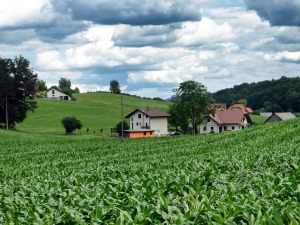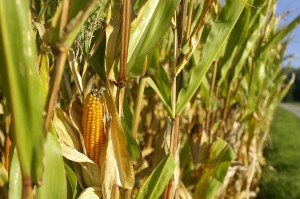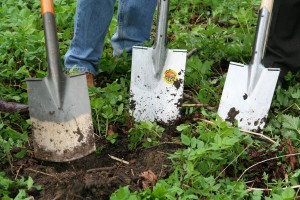Ready for some spring gardening? This is the perfect time to prepare for your spring gardening. If you already have your backyard kitchen garden ready, here are three plants that are awesome as companion plants.
We talked about building your own vegetable garden in your backyard in one of our previous blogs. Today we are going to discuss three plants that you could grow in your garden. The three plants that we are going to talk about growing are three classic companion plants, which are sweet corn, pole beans and pumpkins.
Why grow companion plants
 Growing companion plants together allows you to use space more efficiently while growing a variety of crops, as well as warding off many pests and providing nitrogen to the soil without needing to use any synthetic fertilizers or pesticides. It’s a natural way to grow a variety of plants in the same area, that do well together, and so, it increases productivity of each individual plant.
Growing companion plants together allows you to use space more efficiently while growing a variety of crops, as well as warding off many pests and providing nitrogen to the soil without needing to use any synthetic fertilizers or pesticides. It’s a natural way to grow a variety of plants in the same area, that do well together, and so, it increases productivity of each individual plant.
Organic gardeners have learned through years of experience that some of these plants, when they are in a close proximity, help each other grow. While some plants maximize use of space and increases production, some other plants, such as garlic and onion, can be planted as companions with carrots or cabbage, for example, to repel pest invasion naturally. You will find a link to a list of companion plants at the end of this article.
Growing Sweet corn, beans, and pumpkin as companion plants
Sweet corn, beans, and pumpkin are three legendary crops that are known to grow and thrive together for generations, This gives you an excellent opportunity to feel connected to the history and tradition of the land. The three plants are often referred to as “the three sisters”because they grow together as a family.
Sweet corn is a highly nutritious crop. Growing these three plants together gives you three healthy crops at the same time and same place. It increases production and provide long-term soil fertility as well.
“Sweet Corn is a highly nutritious crop that provides high amount of calories per acre. It thrives when accompanied by beans and pumpkins rather than growing alone. “
How they benefit each other?
 Corn plants: Corn plants, especially the tall and sturdy variety, provide natural poles for your climber plants. Plants like beans, pumpkin, squash, cucumber, melon, or similar plants do well climbing off the ground. Climbing keeps their fruits out of reach of pests on the ground.
Corn plants: Corn plants, especially the tall and sturdy variety, provide natural poles for your climber plants. Plants like beans, pumpkin, squash, cucumber, melon, or similar plants do well climbing off the ground. Climbing keeps their fruits out of reach of pests on the ground.
Beans: Beans are legume plants. Legumes have a unique ability to improves the overall soil quality. They have a natural nitrogen fixing ability through a symbiotic bacterial relationship in their roots. Nitrogen fixing means that the plant pulls nitrogen from the surrounding environment and sends it to its roots where beneficial bacteria return it to the soil.
Pumpkin: Pumpkin plants shade the ground with their large leaves and help retain moisture for the corn and bean plants. They also reduce weed growth, deter pests and they are known to improve growth and may even improve flavor for other pants as well.
When should I start?
 You can start preparing your land right now and start sowing seeds anytime when the overnight temperature stays above 50 degrees Fahrenheit. You can sow your seeds anytime up through June.
You can start preparing your land right now and start sowing seeds anytime when the overnight temperature stays above 50 degrees Fahrenheit. You can sow your seeds anytime up through June.
You can also start seeds indoors in a sunny window then transplant the seedlings to your garden when there is no longer a risk of frost.
How to plant?
Corn must be planted in several rows to ensure adequate pollination. You will need a minimum 10 foot by 10 foot space in your backyard to start sowing your seeds. Follow these steps for your garden.
- Choose a site that gets plenty of sunshine throughout your growing season.
- Dig and loosen up your soil, separate any unwanted materials such as stones, branches, etc.
- Mix with some organic fertilizers, manure or compost. Your kitchen waste, your yard waste, your household waste and ash, can be turned into excellent compost. You can mix them together and make your own organic fertilizer from compost.
- With a string mark off three ten foot rows, five feet apart.
- Make three mounds in each row, about a foot high, a foot and a half across, and equally spaced from each other.
- Plant four corn seeds in each mound.
- Plant bean when corn plants are about four inches tall. Weed the entire space before planting bean seeds in each mound.
- Make mounds for pumpkin in between the rows of corn.
Spring is right around the corner, so you should get started as soon as the frost season is over. There is no better way to get a fresh supply of organically grown vegetables than right from your home garden, so get busy and enjoy!
If you would like to learn more about sustainable agriculture or to learn about DIY sustainable feeding systems please contact us at 303-495-3705 or Click here to book a meeting with us.
P. S. : – We’d love to hear from you so please visit our Facebook Page and leave your comment there. We’d also appreciate it if you leave your comment in the comment box below.
Source: Nourish the Planet
Resources and related articles:
- Want Fresh Vegetables? Build Your Own Vegetable Garden! | Nourish The Planet
- Basics Of Growing Sweet Corn In Your Backyard Or Small Garden | Nourish The Planet
- List of companion plants – Wikipedia, the free encyclopedia
- Beginner’s Guide to Companion Planting: Organic Gardening
- Benefits of Eating Sweet Corn | Healthy Eating | SF Gate
- How To Make Your Own Organic Fertilizer Thorough Composting | Institute of Ecolonomics



